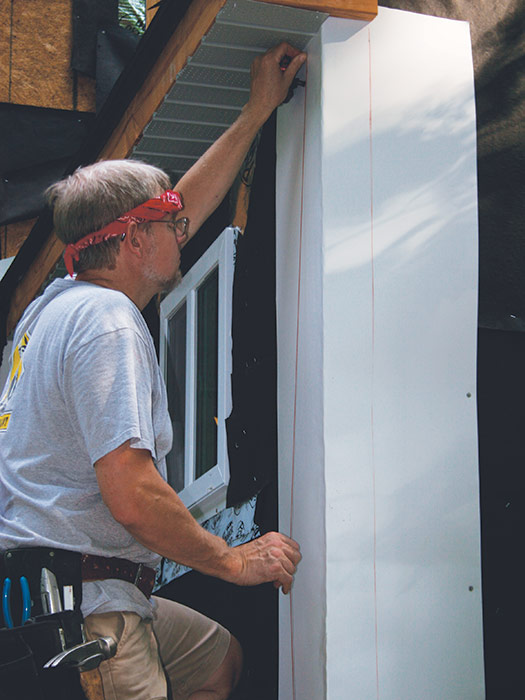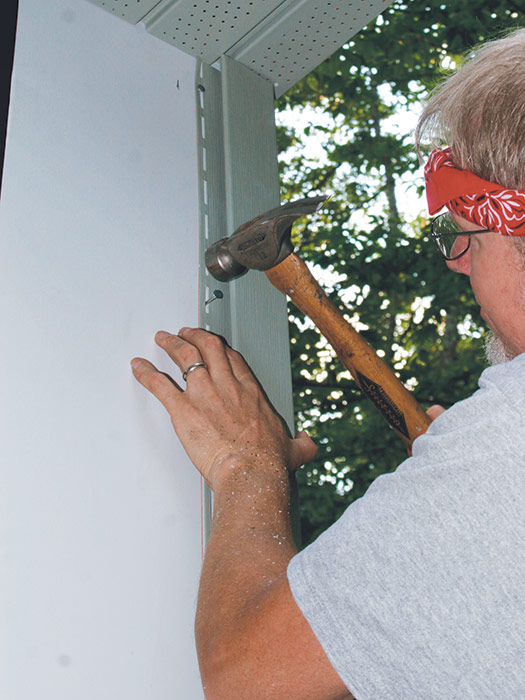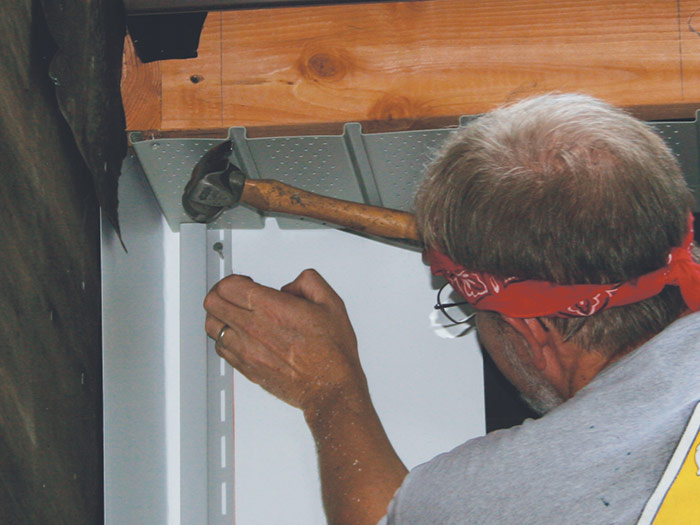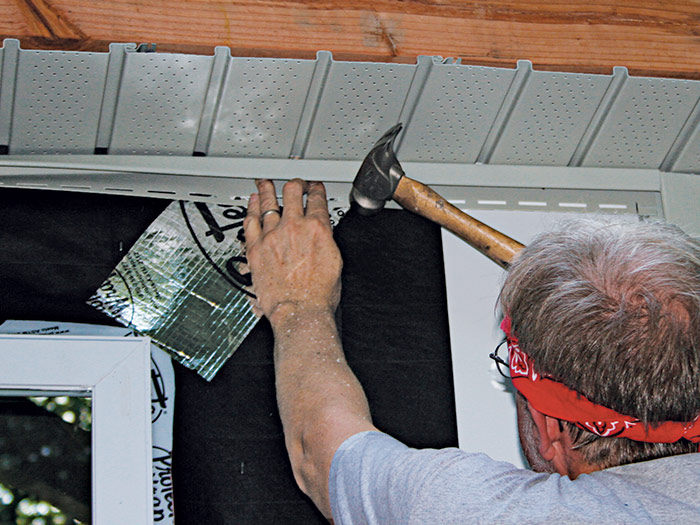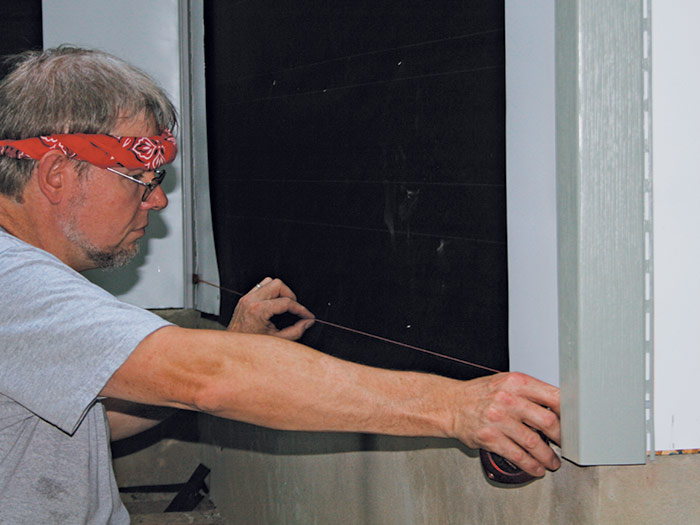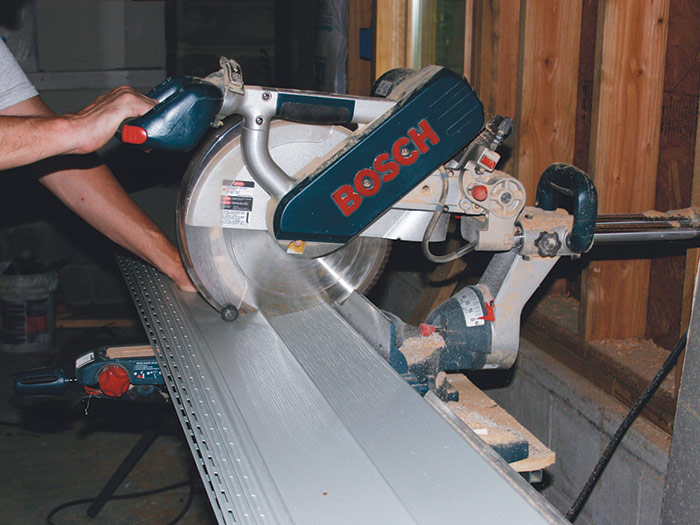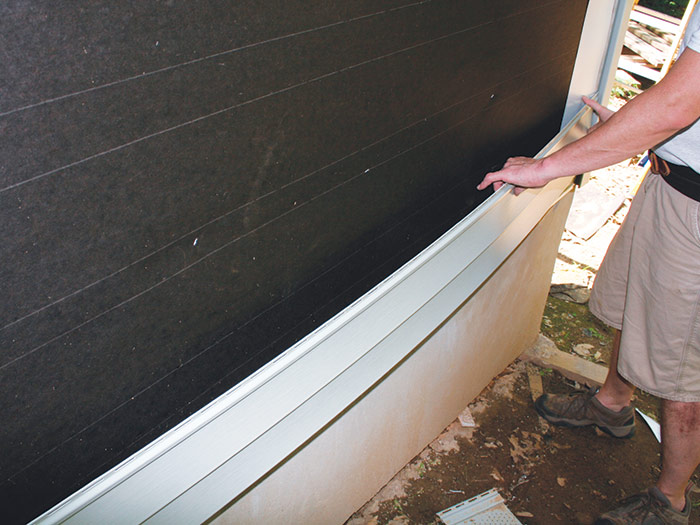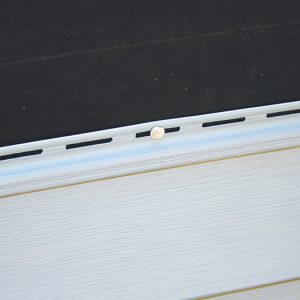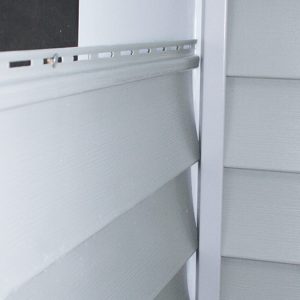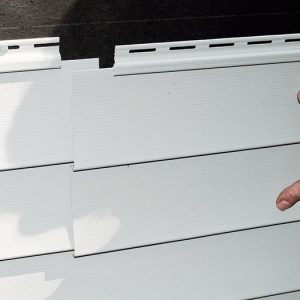Tips for Laying Out and Installing Vinyl Siding
Learn how to install the outside corners, nail the J-channel, set the starter strips, and install the siding panels.
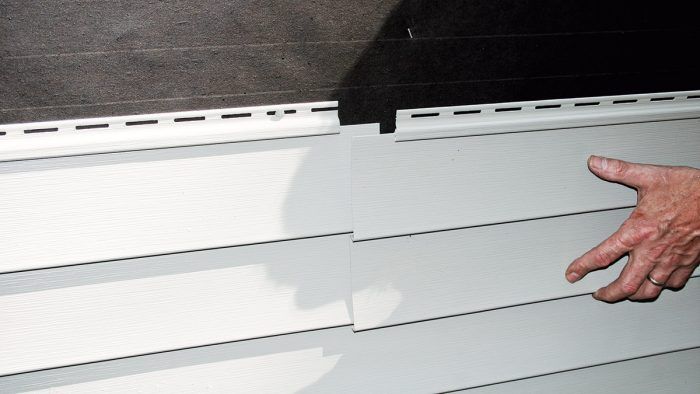
Once you’ve installed the fascia and soffits, you can begin the process of installing vinyl siding panels. But before covering the walls with siding, you first have to nail on the corner pieces, install J-channel, and set the starter strips.
Installing Outside Corners
Vinyl-siding installations start at the corners. On each wall, top and bottom, mark the width of the corner piece. Then snap vertical chalklines between these marks. 1 On a miter saw, cut the corners about 1⁄2 in. longer than the wall height.
Nail the corner piece to the line with roofing nails, butted tightly to the soffit. Keeping the joint between the corner and the soffit tight will force any expansion to take place at the bottom. Set the nails in the top of the corner piece at the top of their slots. 2 Loosely nail the rest of the corner about every 12 in., in the center of the slots.
Installing J-channel
Inside corners get backed up with rigid flashing, then trimmed with J-channel, or “J,” that receives the cut ends of vinyl panels. A common practice is to nail a piece of J to each side of the corner, but that uses twice as much as you need. Even then, you’ll use a lot of the stuff. Simply nail a piece of J to one wall, spaced 3⁄4 in. away from the intersecting wall. 1 The siding on one side slips into the recess of the J-channel, the siding on the other side slips behind it.
Next, fit J from corner to corner, just below the soffit. 2 Space nails in J about 12 in. apart, and again, nail loosely. The recess in the J will capture the top of the vinyl siding, as well as hide the cut ends of the soffit panels. If more than one piece of J is needed to span the length, lap the pieces by 3⁄4 in.
Setting the Siding Starter Strip
The last piece I run before installing vinyl siding panels is the starter strip. Measure the width of the starter strip, mark both ends of the wall at this measurement, and snap a chalkline to locate its top. This way, when the siding clicks in, it will align with the bottom of the corners. 1 Nail the starter strip in place with 1-1/4-in. roofing nails about every foot. The bottom edge of vinyl siding, the buttlock, is hook-shaped, and engages in the starter strip. 2
Starting the Vinyl Siding
Cut the first piece of siding to length (remembering to leave it a little short for expansion) with a miter saw. It’s much faster if you can stack up a bunch of pieces of siding of the same length and gang-cut them. 3
Holding the first panel above the starter strip, slip it into the J-channel at the corner. Push the siding’s bottom edge over the starter strip, then snap the hook on the siding into the starter strip. You’ll feel it engage. 4
Before you nail them, the first panel and all succeeding panels are held in place by their engagement along the bottom edge. As you install each panel, make sure it’s engaged along its entire length, then nail it with 1-1/2-in. roofing nails about every 16 in. in the center of the slots. Don’t worry about hitting studs, and never set the nails fully—leave them a little loose so the siding can move. 5 At inside corners, just slide the siding from the intersecting wall behind the J you installed for the original wall. 6
Lap abutting panels by about 1 in. 7 Pay attention to the direction of the lap, as well. At obvious viewing points, such as the front door, lap the near piece over the far piece to hide the seams. Laps should not align vertically—separate them by at least 3 courses.
 Excerpted from Carpentry Complete: Expert Advice from Start to Finish, by Andy Engel
Excerpted from Carpentry Complete: Expert Advice from Start to Finish, by Andy Engel
Available at Amazon.com.

